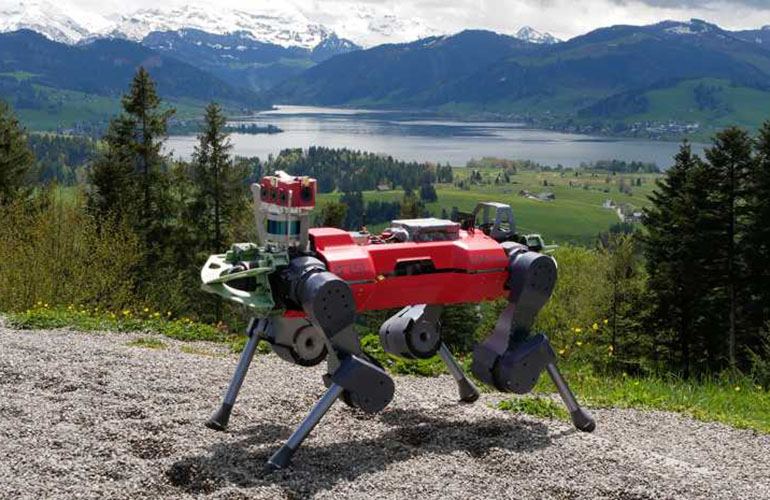|
Listen to this article  |

ANYmal, ETH Zurich’s quadruped robot, on Mount Etzel. | Source: ETH Zurich
Mount Etzel, in Switzerland, is ripe with challenges for a legged robot. Between slippery ground, high steps and trails full of roots, the 3,602 ft mountain is the perfect testing ground for ANYmal. ANYmal is a quadraped created by the Robotic Systems Lab at ETH Zurich.
Difficult terrains are particularly challenging for robots. They struggle to combine the visual perception of their environment with the proprioception of their legs. For humans, this is a task that we don’t even have to think about, but robots can only do this in limited ways.
The information that robots gather about their environment with sensors can often be incomplete or ambiguous. The robot might see tall grass, a shallow puddle or snow and determine that it’s an insurmountable obstacle. Alternatively, the robot might not pick up on those obstacles at all if the sensors are obscured by weather conditions or poor lighting.
“That’s why robots like ANYmal have to be able to decide for themselves when to trust the visual perception of their environment and move forward briskly, and when it is better to proceed cautiously and with small steps,” Takahiro Miki, a doctoral student and lead author on the study, said. “And that’s the big challenge.”
New control technology
To help ANYmal navigate environments quickly, the team used a new control technology, developed by ETH spin-off ANYbotics, based on a neural network. Thanks to this controller, ANYmal learned how to combine its visual perception with its proprioception. The team tested ANYmal’s ability in a virtual training camp before bringing it out into the world.
On Mount Etzel, ANYmal scaled almost 400 feet (120 m) in just 31 minutes. “With this training, the robot is able to master the most difficult natural terrain without having seen it before,” ETH Zurich Professor Marco Hutter said.
ANYmal learned how to overcome numerous obstacles, as well as when to rely more on its proprioception instead of visual perception. This way ANYmal can tell when poor lighting or weather is distorting its perception, and navigate with its sense of touch instead.
Credit: Source link


Comments are closed.